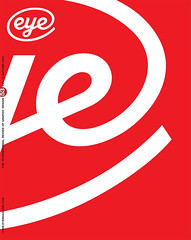Autumn 2004
Art Without Boundaries
Letter from Philip Thompson
Your Archive feature about Art Without Boundaries (Eye no. 50 vol. 13) was brought to my notice by an ex-Watford student of mine. Gerald Woods and I met when we were teaching at Watford School of Art around the late 1950s, early 1960s. On the staff were Peter Schmidt (Beaux Art gallery) Gwyther Irwin (Gimpel Fils), Derek Hirst (Angela Flowers), Rowland Jarvis, Mark Boyle, Ray Moore (photographer), Dieter Rot, Hansjorg-Mayer, Anthony Froshaug, Alan Kitching and visiting people like Cornelius Cardew, Brian Eno, Richard Hamilton, Edward Wright et al.
It had a very enlightened head of department – one Sandy Sutherland – who was an MA Courtauld-Institute-educated painter, looked like a bank manager, and who would interview you without any fuss if you wanted a teaching job. If he liked you, you had absolute carte-blanche to do what you liked. It was really a wonderful model for an art school and one never likely to be seen again.
I’d always been confused by categories in art from about the age of seven, enjoying cartoons, posters and fine art without concern for some hierarchical consideration. Watford was my first art school job and this heady mix of staff all doing their own thing but finding a common ground, seemed to accord with my early feelings.
It was about ten years later when Gerald and I decided to write Art Without Boundaries (a working title suggested by Mel Calman) and it was largely due to our Watford experience. As you can see, so many of the staff at Watford feature in AWB.
Sadly, Gerald Woods died about a fortnight ago. We had been e-mailing each other and kicking around some ideas for a further publication.
Philip Thompson, London
(A postscript: When AWB first came out, the critic John Berger wrote in New Society: ‘The intro contains a photograph of the sheet music to John Cage’s 4’33". Would that all the pages in the book were blank. I feel sorry for the people in the book; it’s much better to be out than in.’ It took him two pages to rubbish it further!)
First published in Eye no. 53 vol. 14 2004
Eye is the world’s most beautiful and collectable graphic design journal, published quarterly for professional designers, students and anyone interested in critical, informed writing about graphic design and visual culture. It is available from all good design bookshops and online at the Eye shop, where you can buy subscriptions, back issues and single copies of the latest issue. You can also browse visual samples of recent issues at Eye before You Buy.

